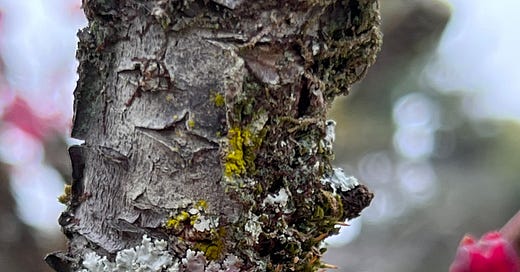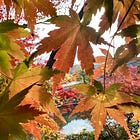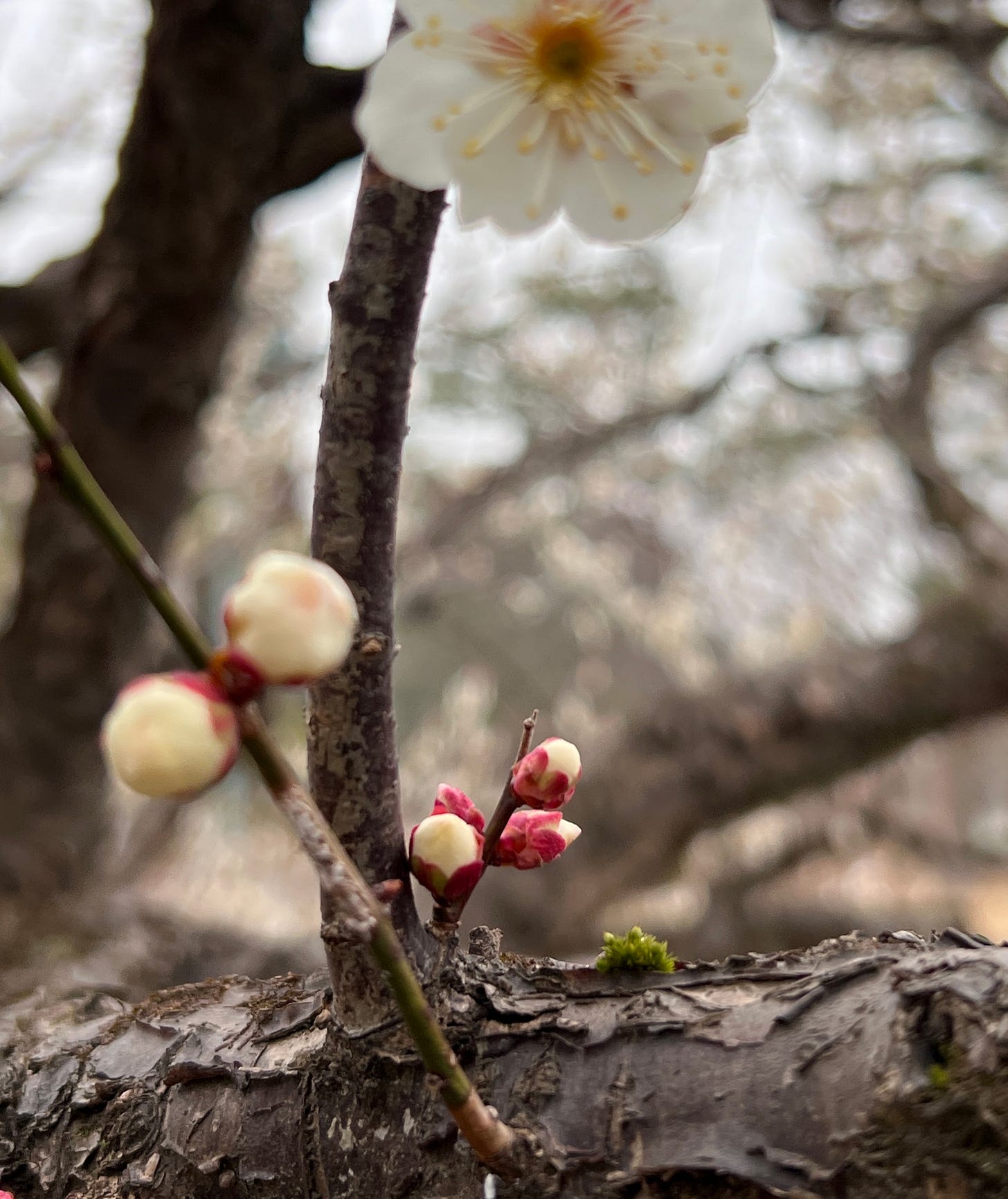
See Instagram | See LinkedIn | See previous posts | About
Soon this week, we are entering the third of the 24 solar terms - 惊蛰 Awakening of Insects which precedes 春分 Spring Equinox (fourth of the 24 solar terms) in a couple of weeks.
The 24 solar terms 二十四节气 are based on traditional Chinese calendar, a product of ancient farming civilization.
Each solar term consists of 3 pentads 候, which forms the Japanese 72 microseasons, rooted in the ancient Chinese calendar system. Below you could see the pentad variations between the two systems, reflecting local climate and observations:
Chinese calendar: 一候桃始华; 二候仓庚(黄鹂)鸣; 三候鹰化为鸠 (1 Peaches begin to blossom; 2 Orioles sing clearly; 3 Eagles transformed into doves)
Japanese calendar: 蟄虫啓戸; 桃始笑; 菜虫化蝶 (1 Hibernating insects surface; 2 First peach blossoms; 3 Caterpillars become butterflies)
好文木 Kobunboku and the ume
Sources:
-100 Beautiful Words in the Way of Tea (2020) by Bruce Hamana Sosei
-JAANUS or Japanese Architecture and Art Net Users System
-Uncanny JapanWhile cherry blossom or sakura is mostly associated with Spring in Japan, plum blossoms (ume) are actually the first sign of the season - signifying late winter and the start of spring. Ume is a sign of strength and endurance - the colder the winter the more splendid it blooms.
Originally introduced from China (called 梅花 mei hua) to Japan, ume - even though we generally refer to it as a plum - is actually more related to apricots or prunus mume.
In Japan, the alternate name for ume is kobunboku, literature-loving tree with scent reminiscent of plum blossoms. Figuratively, ko means nice, bun means elegant or literate, boku means wood or tree. In China, it was said that ume flowers bloomed when the scholarly Emperor Wu of Jin (236-290) studied and then withered as he completed his studies.
Ume or 梅花 mei hua is also connected to the following expressions with origin from China, introduced to Japan during the 8th century of Heian era.
Three Friends of Winter 歳寒三友 (saikan sanyuu) - pine, bamboo, plum blossoms, known as Shochikubai, often used as symbols of longevity and strength in new year decorations.
Four Gentlemen 四君子 (shikunshi) with seasonal associations - plum blossoms (winter), orchid (spring), bamboo (summer), chrysanthemum (autumn), as comparison between the plant qualities to attributes of men with virtue.
In Japan, hanakotoba 花言葉 or the language of flowers is dependent on colors. Overall, plum blossoms symbolize elegance, virtue, purity, and endurance. Brighter koubai 紅梅 or red plums represent elegance and charm.
Poetry and plum blossoms
Plum blossoms and I rather sing the same tune
In ice and frost as the year grows old
our spirit only grows stronger;
Not to be compared to the flourishing flowers
that so easily wither and scatter. Chinese poem by Wang Mian 王冕, Yuan Dynasty, a renowned Chinese painter and poet, 1287-1359. With brief stint as a military adviser to Emperor Zhu Yuan Zhang, credited to the transition from labor intensive compressed teas to loose-leaf teas.
Moon, plum blossoms, this, that, and the day goes.
梅が香に障子開けば月夜かな (1795) plum blossom scent--
when I open my paper door
a bright moon (trans. David G. Lanoue)
梅が香やどなたが来ても欠け茶碗 plum blossom scent --
whoever comes
a chipped tea bowlJapanese haiku by Kobayashi Issa 小林 一茶, 1763-1828. Like Basho, he went on four pilgrimages. And like Basho, his life on the road was his way of inspiration with scents of the seasons drifting along with him.
Coming soon, more photos from this season: See my Instagram









I love this one! Plum blossom is also the national flower of the Republic of China (Taiwan).
鄧麗君 had a beautiful song named Plum Blossom. https://www.youtube.com/watch?v=eUZhgWZV2JQ
Thank you, Peck Gee for such an insightful article. 🙏🏽